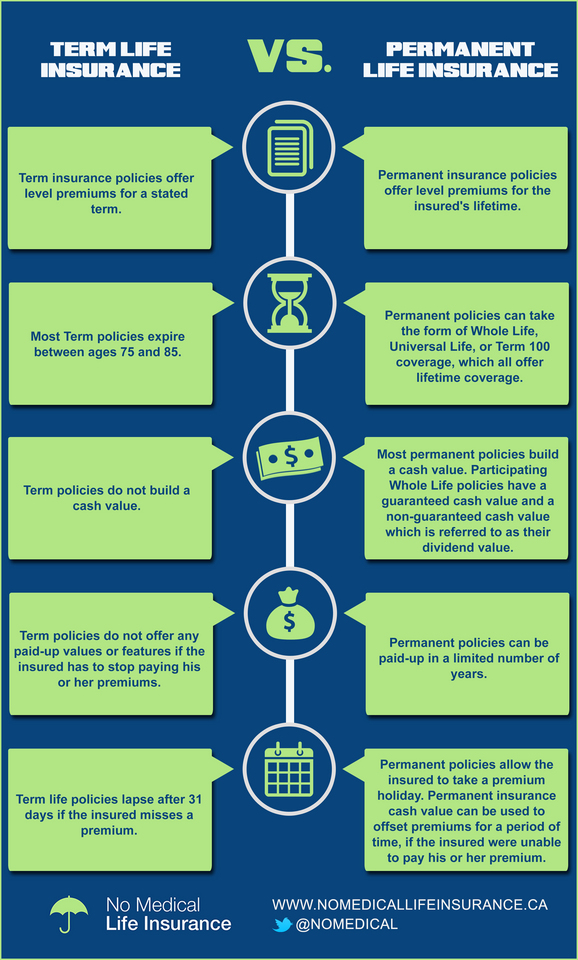Here’s an infographic breaking down the differences between Term and Permanent Life Insurance. Which one suits your needs?

| Policy | Term insurance policies offer level premiums for a stated term. | Permanent insurance policies offer level premiums for the insured’s lifetime. |
| Duration | Most Term policies expire between ages 75 and 85. | Permanent policies can take the form of Whole life, Universal Life, or Term 100 coverage, which all offer lifetime coverage. |
| Cash Value | Term policies do not build a cash value. | Most permanent policies build a cash value. Participating Whole Life policies have a guaranteed cash value and a non-guaranteed cash value which is referred to as their dividend value. |
| Paid-up values | Term policies do not offer any paid-up values or features if the insured has to stop paying his or her premiums. | Permanent policies can be paid-up in a limited number of years. |
| Calendar | Term life policies lapse after 31 days if the insured misses a premium. | Permanent policies allow the insured to take a premium holiday. Permanent insurance cash value can be used to offset premiums for a period of time, if the insured were unable to pay his or her premium. |



